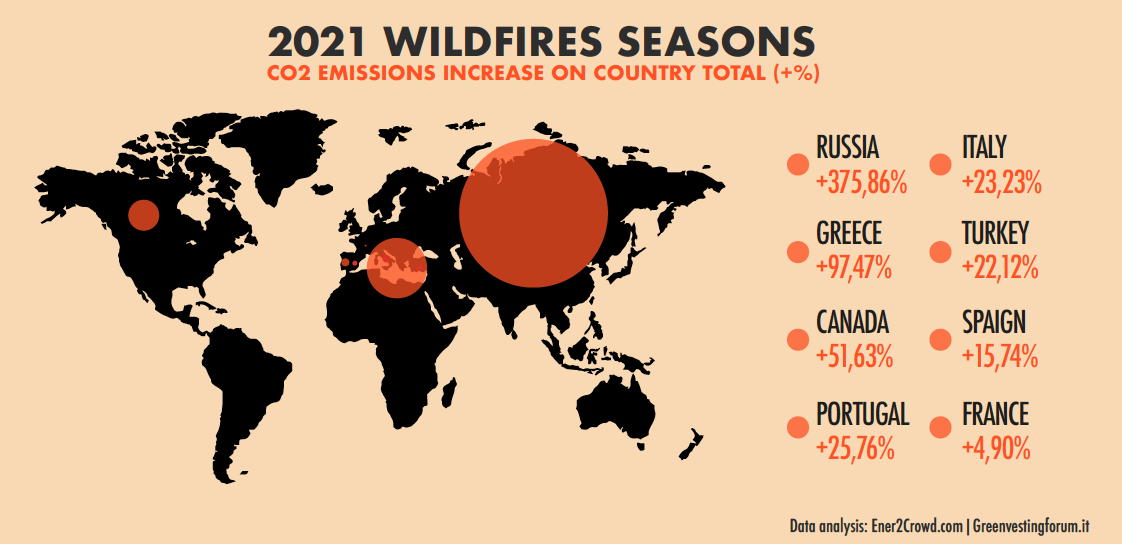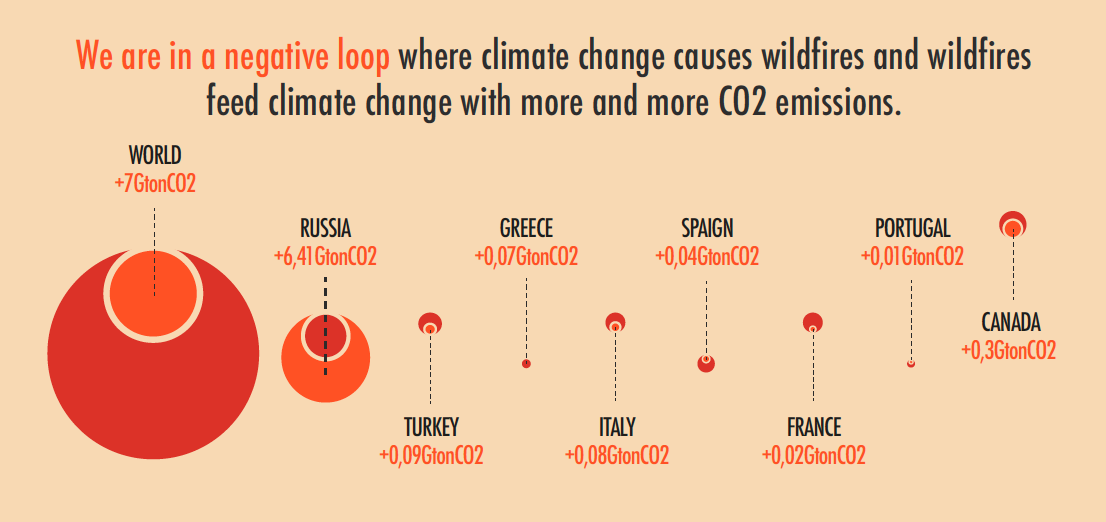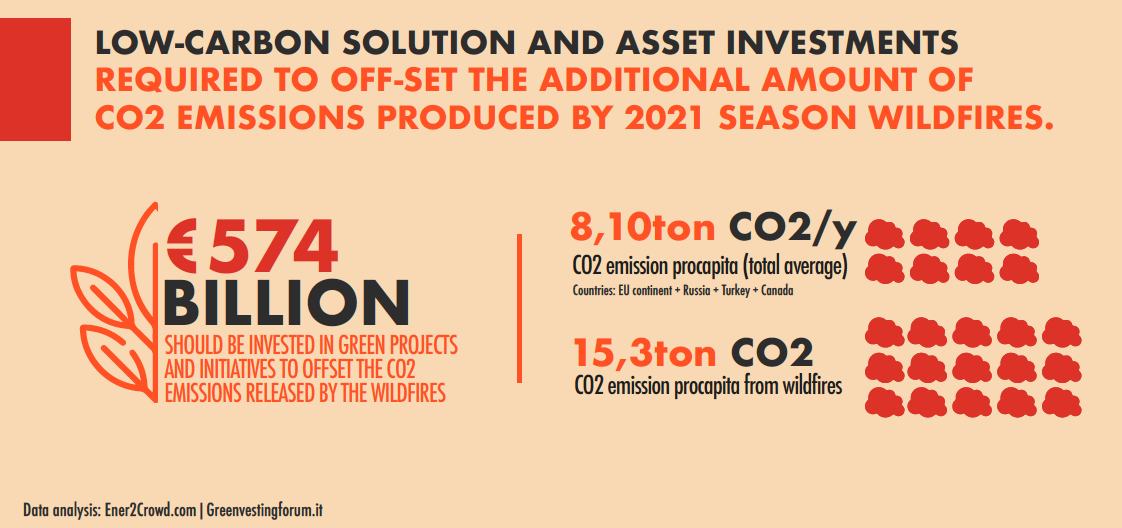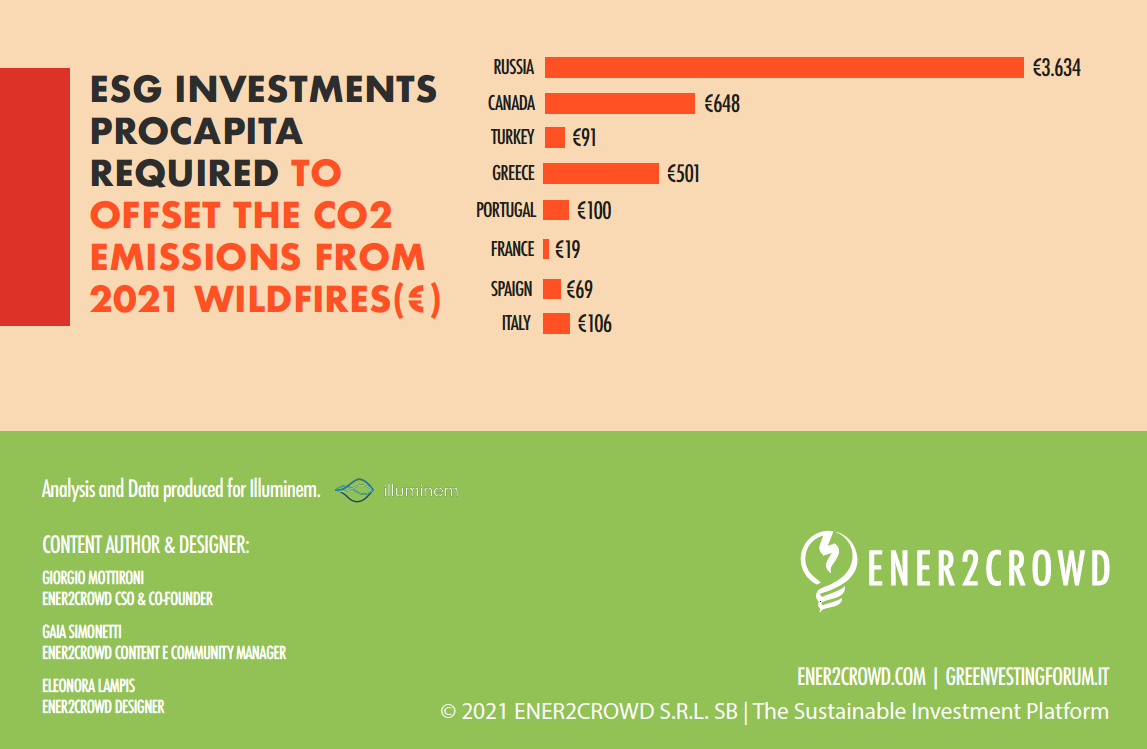A burning planet shows how delicate our plans for a net-zero future are


· 5 min read
Year 2021 is not just one of the hottest we have ever lived - since we record scientific climate data - it is also the year when our planet truly started to burn, or at list when we say it from a very close point of view. Devastating images from the European countries and terrible news from the Siberian region in Russia are just a part of a worse global scenario: we are in a negative loop where climate change causes wildfires and wildfires feed climate change with more and more CO2 emissions. The same amount forests and billions of trees have stored for us mitigating the impact of anthropic production, habits and life on this planet.

Just to give a rapid clue of the dimension of the tragedy we just attended to, in all of our industrial and pre-industrial history we cut 2,5trillion trees, and every year we keep on cutting about 380million trees, but in 2021 wildfires (EU countries, Turkey, Canada and Russia) we lost probably 10billion trees.
Our global economy keeps on cutting 1ha of trees every one minute and we are able to re-plant that 1ha in one day. The destruction of primary biomass and biodiversity runs 1.440 times faster than everything we do to fight it.
Those number should make us reflect on how much important is to preserve the green forested lands that we still have, and how much we should be worried about wildfires and everything that can contribute to start them. Even because an old tree can sink 30 times the amount of CO2 of a young tree.

The dramatic consequence, for us and for our road to 2050 “net zero”, is the increase of the global CO2 emissions by +19,3% (7Gton). Emissions that will contribute to keep the CO2 concentration higher and higher, amplifying the green house effect of the atmosphere (and so the rise of global temperature, the speed of ice melting, the rise of sea levels, and potentially more catastrophic meteorological events).

A wide richest portion of the planet (8,10 CO2ton/y per capita) has been the scenario for substantial further increase of 15,3ton CO2 emissions pro capite: it’s almost a +200% increase due to wildfires.
The hoax is represented by the fact that most of the negative impacts come from fossil fuel based economies like Russia and Canada, two of the global countries with the highest level of yearly CO2 emissions pro-capita (Russia: 11,73tonCO2/y, Canada: 15,24tonCO2/y |World Average: 4,75tonCO2/y).
Those two countries are also the ones that will benefit the most from a global temperature rise in terms of GPD growth and possibility to exploit new commercial routes through the Arctic.
The consequent environmental costs could be estimated in €701 billion, and reforestation costs are about €1,1 trillion.
Moreover to offset the CO2 emissions released from the 2021 European continent (Russia included) and Canada wildfires we should invest in green (low-carbon) projects and initiatives about €574 billion: €1.249 per each person living in the countries taken into this research (EU countries, Turkey, Canada and Russia).

But breaking down numbers EU countries should invest only €89/percapita, while Turkey, Russia and Canada together should invest an astonishing amount of €2.108 percapita (total €557 billion).
Russia is the black sheep with 12,5million hectares of forest lost, +6,5Gton of CO2 Emissions (+375% on total country CO2 emissions) and an environmental damage of 4.400€ procapite (91% of the total environmental damage).
Most impacted EU countries (Italy, Spain, France, Portugal, Greece, representing the 2,5% of the global population) have lost 420.000 hectares of forest in wild fires contributing to the global CO2 emissions increase by +0,6%.
In the EU (most impacted countries) we should invest in low-carbon solutions and assets, through direct financing (energy crowdfunding), €17,4 billion (€90 percapita) to off-set the additional amount of CO2 emissions produced by 2021 season wildfires.
Numbers emerging from the study suggest that we should invest in preventing wildfires because they are not just accelerating the climate disruption but are also risking to vanish all the effort we put into reforestation and biomass-related sustainable chains.
Most of the discussion about the “net-zero-goal” is based on off-setting important volumes of CO2 emissions thanks to new forests or revitalised soils (the EU has established a 3% quota of its 2050 emissions reduction goal), and forest management (primary or secondary) becomes a critical issue: what we actually do in our economy based on fossil fuels is taking carbon from the geosphere and putting it into the atmosphere, hoping that the biosphere (and part of the cryosphere) will help us storing it. But if we look at that process under the “wild fire tragedy perspective” this means moving a huge amount of climate-impacting carbon from a stable balance condition to a very unstable one.
We can’t afford the loss of any more tree, under an economic point of view and under the most important bio-climate-life-cycle point of view. For our sake and future generations’ one.
Energy Voices is a democratic space presenting the thoughts and opinions of leading Energy & Sustainability writers, their opinions do not necessarily represent those of illuminem.

Analyzed countries (EU continent, Russia included + Canada)
EU countries (most impacted) only
Gokul Shekar

Effects · Climate Change
illuminem briefings

Mitigation · Climate Change
illuminem briefings

Climate Change · Environmental Sustainability
Financial Times

Carbon Market · Public Governance
The Guardian

Agriculture · Climate Change
Euronews

Climate Change · Effects